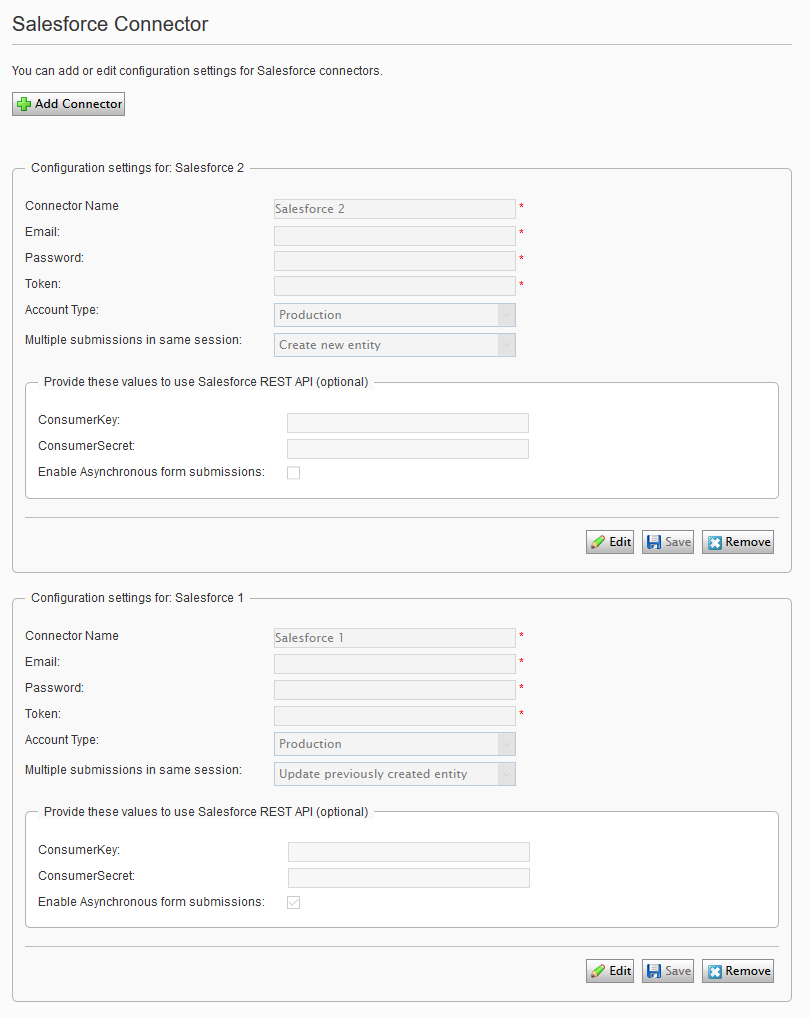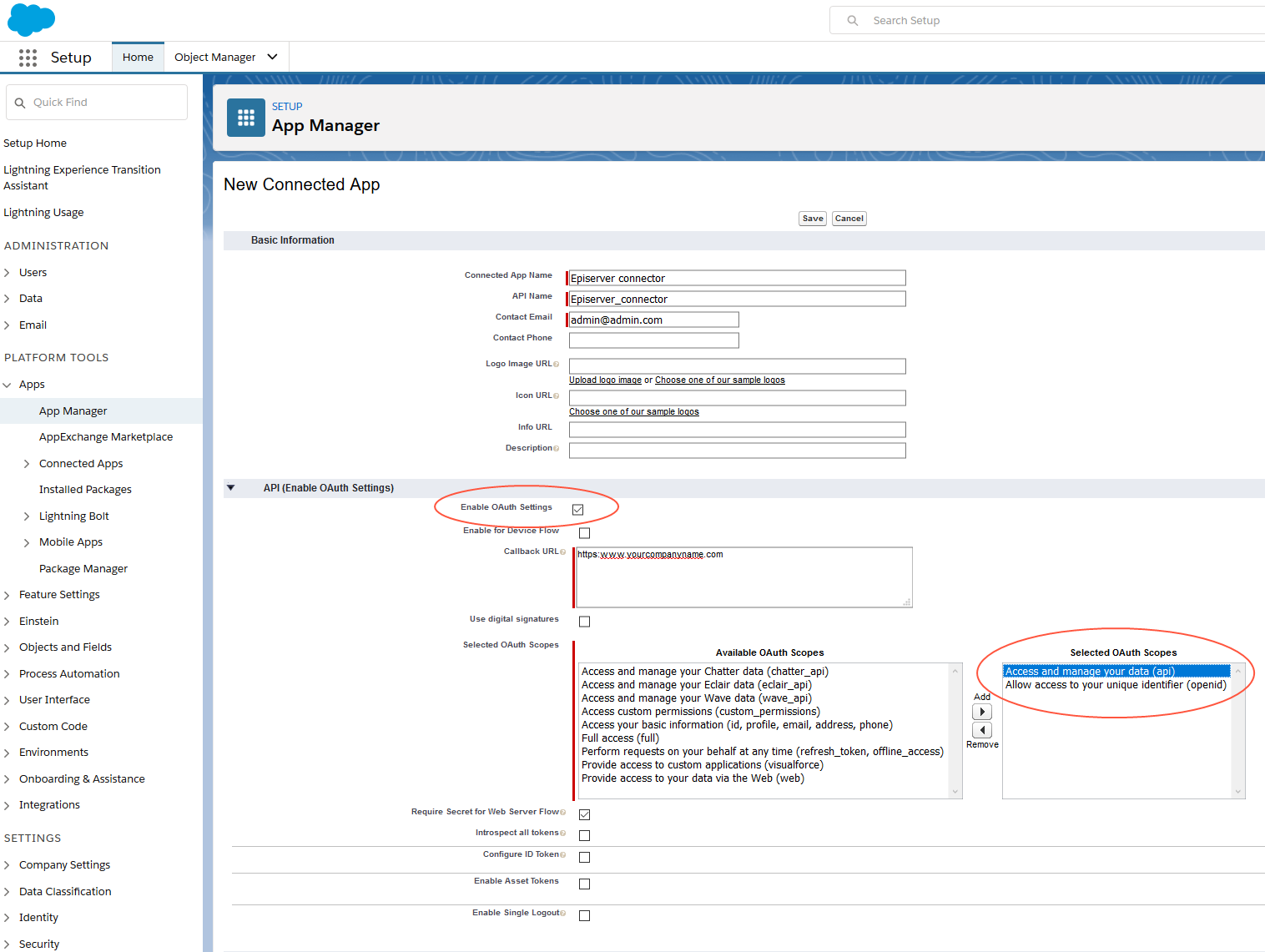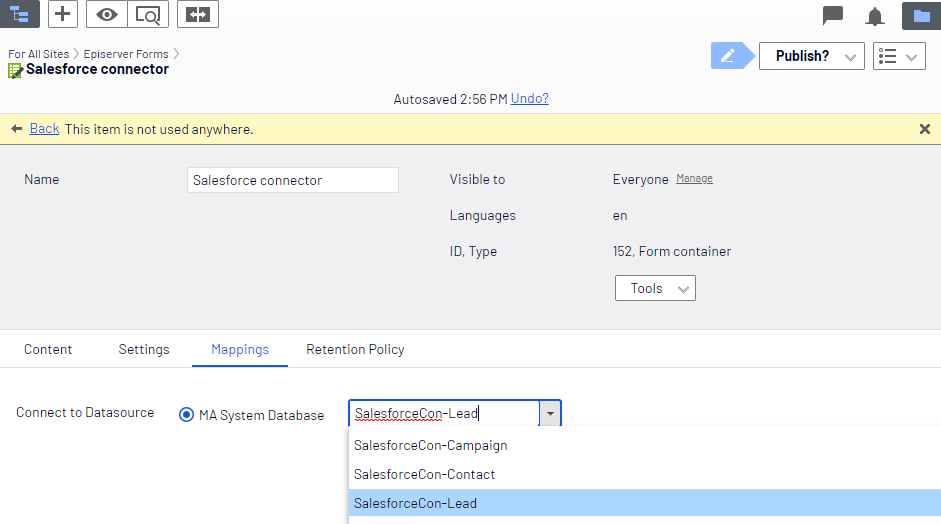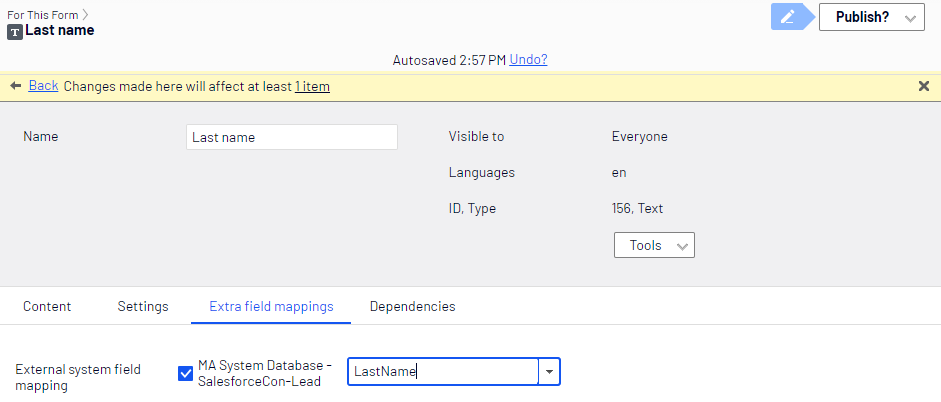 Salesforce connector
Salesforce connector
The Optimizely Digital Experience Platform contains many features to support you in your daily work. Depending on how your solution is set up, some features described in this documentation may not be available to you. Contact your system administrator to find out more. See Optimizely World for technical information.
The Salesforce® connector add-on automatically exports form data from your website to your Salesforce account database by mapping Optimizely form fields to Salesforce database fields. For information about other database connector add-ons, see Marketing Automation.
Setting up Optimizely forms with Salesforce
The Forms Marketing Automation Integration (MAI) connector lets you connect Optimizely form fields to a Salesforce database. See also: Marketing Automation.
A developer must install the Forms Marketing Automation connector and the Salesforce connector. See Optimizely World for more information.
- In the Optimizely CMS admin view, select Config > Tool Settings > Salesforce. The Salesforce configuration settings screen appears.

You can have multiple instances of the same connector. For example, if you have marketing teams in separate regions, you can have more than one Salesforce connector, such as Salesforce - Europe, Salesforce - US, and Salesforce - APAC.Click Add Connector to add another instance.
- Enter an email address, password, and token associated with your Salesforce account.
The security token is emailed when a new account is set up. If you need a new token, you can get one by going to your Salesforce account and selecting My Personal Information > Reset My Security Token. Then click Reset Security Token to receive a new security token in an email that is sent to the address in your Saleforce personal settings.
- For Account Type, select Production or Sandbox to which you want to connect.
- For Multiple submissions in same session, select either Create new entity or Update previously created entity.
- As of Optimizely Salesforce version 4.2.0, you can choose REST API to communicate with Salesforce.
- You must have a Salesforce-connected app (see Create a Connected App) to get the ConsumerKey and ConsumerSecret for the fields. While creating the connected app, enable the Enable OAuth Settings check box and select the following OAuth scopes: Access and manage your data (api) and Allow access to your unique identifier (openid).

- If you want faster performance form submissions and do not need auto-fill and personalization based on Salesforce Profile criteria, enable Enable asynchronous form submissions on the Salesforce configuration settings screen. When enabled, entities are created asynchronously when forms are submitted, but there is no user tracking.
- You must have a Salesforce-connected app (see Create a Connected App) to get the ConsumerKey and ConsumerSecret for the fields. While creating the connected app, enable the Enable OAuth Settings check box and select the following OAuth scopes: Access and manage your data (api) and Allow access to your unique identifier (openid).
- Click Save.
- Enter an email address, password, and token associated with your Salesforce account.
- Enter the information associated with your Salesforce account and click Save.
- Create a form on a page.
- Click All Properties on the form.
- Open the Mappings tab.
- Select the database to which you map the form fields from the MA System Database drop-down field.

- Click Publish.
- On the form, select Edit from a form field's context menu.
- Open the Extra field mappings tab. The database option that you selected earlier appears.
- Enable the database option and open the associated drop-down list to see the fields it has available. For example, if your form has a Text field that was configured to capture a name:
- Edit the email text field.
- Select the Extra field mappings tab.
- Select LastName from the drop-down list to map the Salesforce database field to the Last name field on the form.

- Repeat steps 8 through 10 for as many fields that you want to map.
- Click Publish.
To test the mapping, go to your form on a published page, fill in and submit the form, then go to your Salesforce provider to verify that the user is added to the Salesforce database.
Retrieving contact data
When a visitor submits the form, the data is sent to Salesforce. To see who submitted the form, login into your Salesforce account, select the tab you want (Account, Campaign, Contact or Lead), select the view you want, and click Go.
To create a visitor group for a Salesforce form, see Create a visitor group for an MAI connector form.